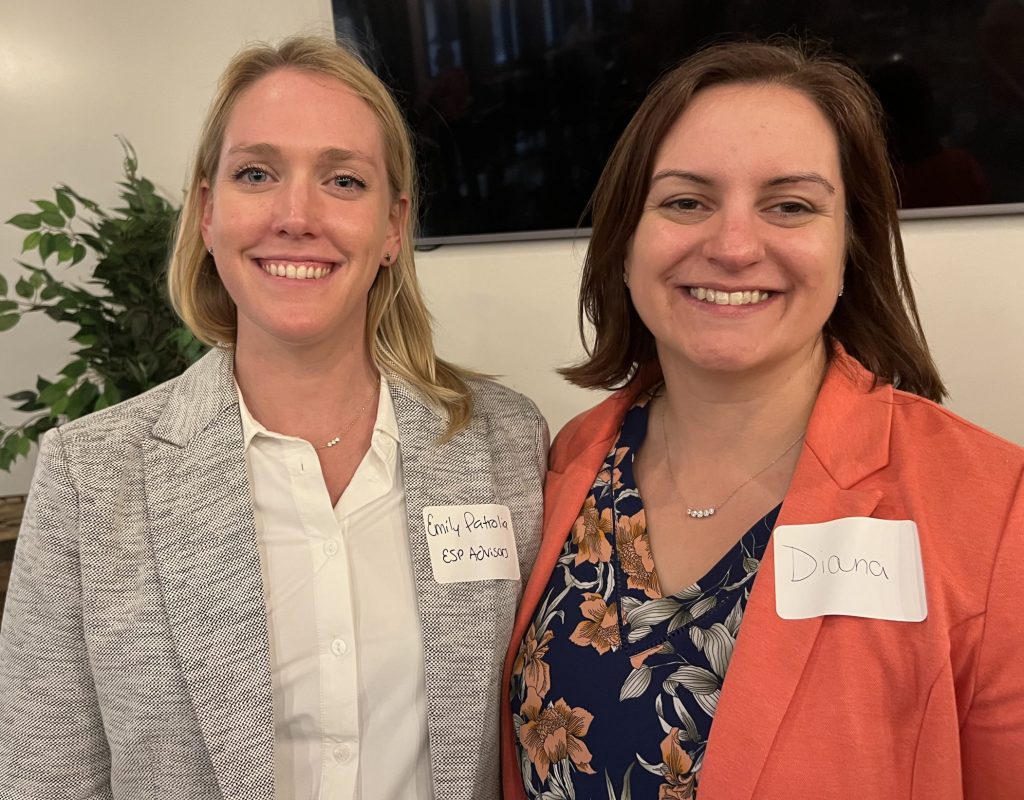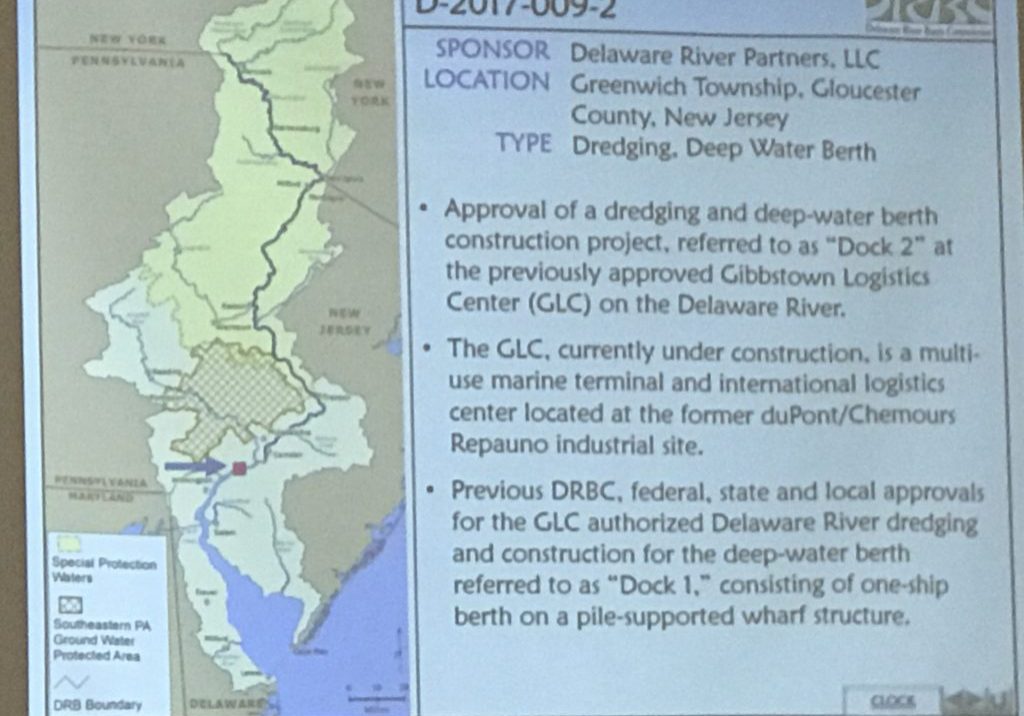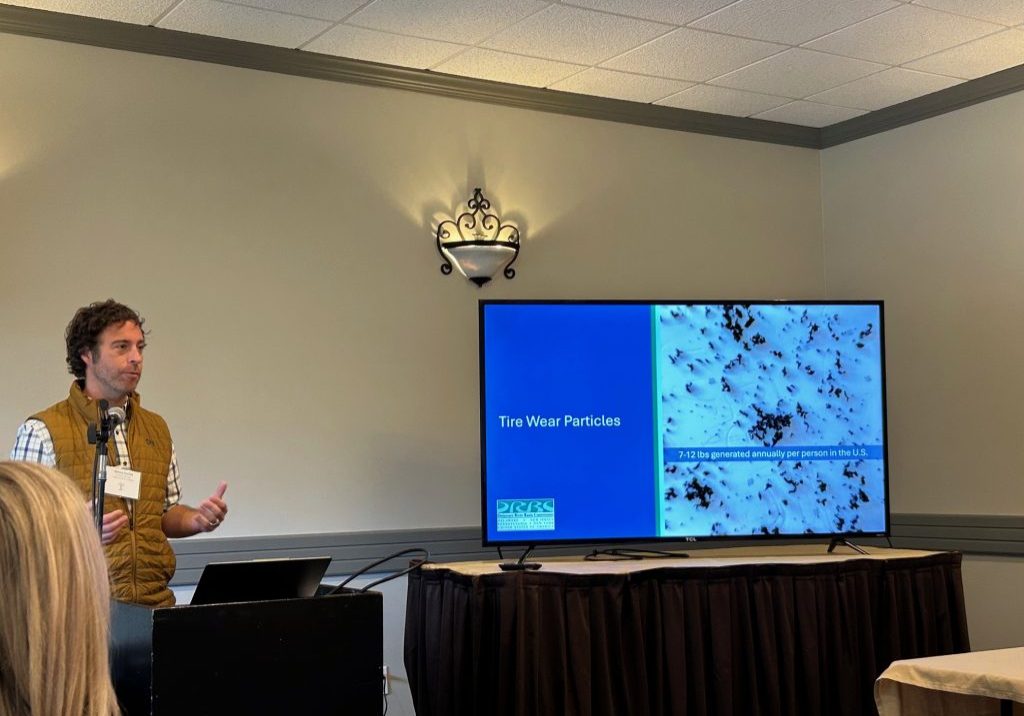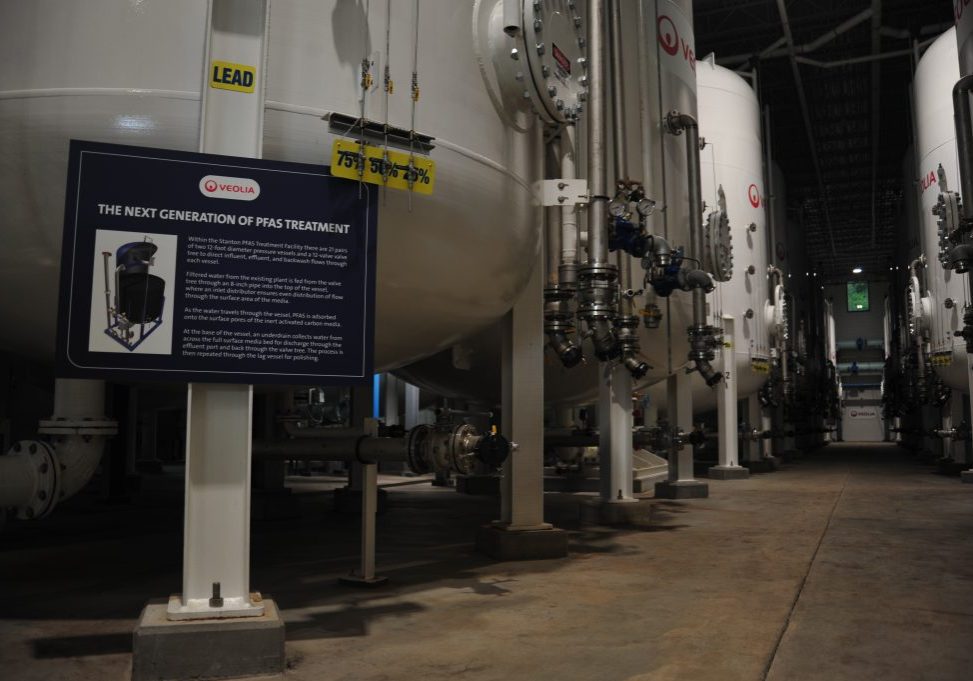
Editorial report: Chaos is a ladder
| May 4, 2025
That quote from “Game of Thrones” was a leitmotif for a gathering of leaders in the Delaware River water community on Tuesday in Philadelphia.
It basically means that when there is chaos, there is opportunity. And boy, by any measure, we have chaos.
It was a quote used by Emily Patrolia, the founder and CEO of ESP Advisors, who is wise in the ways of Washington and generous with advice about weathering the storm that’s coming from Trump & Co. in the first 100 days of his presidency.
The second speaker was Diana Silva, an attorney with Manko, Gold, Katcher and Fox, an environmental and energy law firm based in the watershed. Her presentation was focused on court decisions that have changed environmental policy.
But it was Patrolia’s that spoke to the anxiety so many are feeling.
Disruption and chaos
It was a lightning-fast presentation, and though I took copious notes, I want to point out in the interest of transparency that I asked Patrolia for help and she provided her notes.
The echo of that first quote that runs through the entire presentation is one word: disruption.
Here’s her list of disruptions, many of which we’re familiar with but here’s a quick summary that helps to see cross-agency impacts. The following is drawn from her speech and notes that she provided:
1. Federal hiring freeze means agencies can’t hire new talent.
2. Mass layoffs and buyoffs. (We touched on those in this story.)
Whatever we’ve already heard, there’s more on the way. Patrolia noted that “many agencies, like NOAA and the EPA rely on full-time contractors who act as federal employees. Most of those contracts have been terminated.”
Here’s the biggest takeaway from this disruption: “Agencies are in full chaos.”
As she spoke, Patrolia really drilled down on the effects of all this on the people employed at these agencies: “They are definitely under siege.”
3. Grant freezes and reviews: Nearly all grant programs are paused — frozen is the term of art — especially those that focus on climate resilience, science or DEI.
Some hopeful grantees are working on grant proposals to resubmit, changing the headlines from those firestarter words to something that allows the very similar work to proceed, if the money gets unfrozen.
4. Agency reorganization: “NOAA budget, for example, faces a proposed $1.7 billion cut — slashing coastal resilience programs, moving ESA enforcements to another agency and effectively gutting ecosystem science.”
Patrolia emphasized the tsunami-like “ripples reverberating through all the agencies as they deal with a hierarchy of bosses who are ‘acting, acting, acting, acting’ through all levels of the agencies.”
And there is “tons of internal conflict,” she said. “There is less funding and fewer staff.”
People who would formerly work together now end up competing for scraps to save a project important to them. She pointed out that “the power is shifting from the agency to the White House and DOGE.”
5. Regulatory rollbacks: In the Delaware watershed, we’re paying close attention to the promise from the “old” EPA and reiterated by the new EPA administrator, Lee Zeldin, to finalize the long-awaited rules for dissolved oxygen in the urban zones of the Delaware River.
But…
As Patrolia noted: “New rules are frozen, and agencies are under orders to eliminate at least 10 regulations for every one new rule.”
Will EPA follow through on dissolved oxygen rules?
In the Q and A section of the meeting, both speakers were asked about the likelihood of dissolved oxygen rules coming to pass. Both were dubious, acknowledging that no one has any surefire way to guess what might be coming next, or not.
Not part of the discussion was the fact that the deadline came about when the Delaware Riverkeeper Network and the EPA settled a federal lawsuit in which a consent decree was reached. The agreement required the EPA to implement the new rules by June 30, 2025.
As for fracking in the watershed, the same inability to predict was the response from both.
Patrolia summed up the disruptions: “Less science. Less grant funding. Fewer staff. And a shift toward operational, permitting and industry-focused priorities.”
Here’s what to expect in the next few weeks/months
● Round II of DOGE RIFs and agency reorganizations — Round II, the big one, is coming soon. Expect major announcements on agency reorganization and further reductions in force.
Cutbacks mean that agencies or important programs can be “dismantled in 42-76 hours.”
● FY25 spend plans and recissions package — Congress will get a chance to vote on the administration’s budget cuts. Will they approve it?
Ah, recissions: the process by which the White House cuts funds already voted for and approved by Congress. “In Trump 1,” Patrolia said, “Congress denied his request. For Trump 2, he expects Congress will allow it.”
- FY26 President’s Budget Request — likely to be devastating for water/climate/science.
Patrolia was prescient: President Trump’s discretionary budget request for fiscal year 2026 was sent to Congress last week and includes about $163 billion in cuts.
Here’s a quick summary from nature.com:
“The budget document released by the White House on Friday for the upcoming fiscal year, which starts on 1 October, is light on details, but it calls for disproportionately large cuts for federal science funding. According to the White House document, the proposal would cut all non-defence spending by 23 percent but targets the U.S. National Science Foundation for a 56 percent funding reduction, and would slash the budget of the US National Institutes of Health by roughly 40 percent. The Environmental Protection Agency, which on Friday also announced plans to dismantle its primary research division, would be hit by a 55 percent cut as the administration seeks to eliminate what it call ‘radical’ and ‘woke’ climate programmes.”
The president’s proposals — the so-called “skinny” budget — was released three days after the meeting in Philadelphia.
And looking at impacts on the Delaware River Basin, specifically, Patrolia said, “Federal engagement is still crucial but it’s going to look very different from the past five years.”
● Federal Funding for Water Projects is at Risk: Grants for stormwater management, resilience planning, restoration, and scientific research could shrink dramatically.
● Regulatory Uncertainty: Permitting processes might get faster — or messier. Agencies are losing expertise just as climate risks grow.
● Fewer Allies in Government: Federal staff who understood and cared about local and regional water issues are being lost to attrition, layoffs, or reorganizations.
● Competition for Resources Will Intensify: With fewer grants available, the organizations that are nimble, well-networked, and clear in their advocacy will be the ones that survive.
Quoting again from pop culture, Patrolia said the atmosphere will likely resemble “Hunger Games,” a celebrated book and film series that pitted contestants against each other in a crowd-approved death match, which will mean pitting former allies against each other.
Surprisingly, Patrolia insisted all is not lost and outlined ways for the audience to engage now.
“You are not powerless” is the headline for her last section on smart strategies you can use to stay effective — even in this turbulent environment.
Preparing for the future
Let’s hear from her directly, it’s important stuff to keep yourself steady and ready for the future:
1. Make a connection. Remember — it’s all people. If you can connect on one real thing and that’s all you got done in the meeting, it’s enough to start.
She really pushed the idea of making an emotional connection — like dating, “and getting married on the third date!”
2. Update Your Messaging, Focus Your Story on Economic and Operational Impacts:
Talk less about values; talk more about outcomes. Congress and agencies want to hear about infrastructure, jobs, economic resilience, and risk reduction. Frame your work in those terms.
The word here is “pivot.”
3. Build Congressional Champions, Especially Republicans: Even if your work is nonpartisan, your survival may depend on having allies across the aisle. House and Senate Republicans are key to protecting programs through appropriations. Cultivate relationships with your delegation—even if they’re not on water-related committees.
4. Engage Agencies Early and Often: Despite the chaos, staff are still trying to do the right thing. Meet with them. Share updates. Be their easy yes. Be aware of their situation and what they’re probably going through. Things feel really dire inside the federal agencies right now. Be aware of what you say in writing/in email. Talk on the phone when you can.
It’s not an “agency” you’re trying to keep in contact with, it’s your federal friends, who are feeling all sorts of pressure, including being surveilled.
5. Strength in Numbers: Where possible, work through alliances and coalitions. Unified asks carry more weight than isolated voices. That’s why the work you’re doing through the Water Table — building relationships, forging common ground, expanding your network — is more important than ever.
Here are her closing points:
It’s easy to look at everything happening in Washington and feel overwhelmed. But here’s the reality and some final tips.
Stay informed — just enough.
● Avoid burnout by staying informed on only exactly what you need to. Narrow your focus and trust your neighbors
● To avoid burnout, stay in your lane. Focus on what you can change or influence. Trust your neighbors to do the same. Periods of disruption are also periods of opportunity. Chaos is a ladder.
● Organizations that are clear, connected, and strategic will not only survive — they will lead.
● Lean in with ideas — you’d be surprised how far they could take you. The next midterm election is in 2026, and the next presidential is in 2028.
● No matter the specific outcome, change is inevitable. Stay flexible. The way things were is over. How will we build back?
●The way the federal government used to work has been irrevocably changed. Slowly over time, and suddenly with these final pushes.
● But was it perfect before?
● At some point, the pendulum will swing and some group of people will get to rebuild — what will that look like? Smart people need to start thinking about that now.
Take care of yourself and each other.






